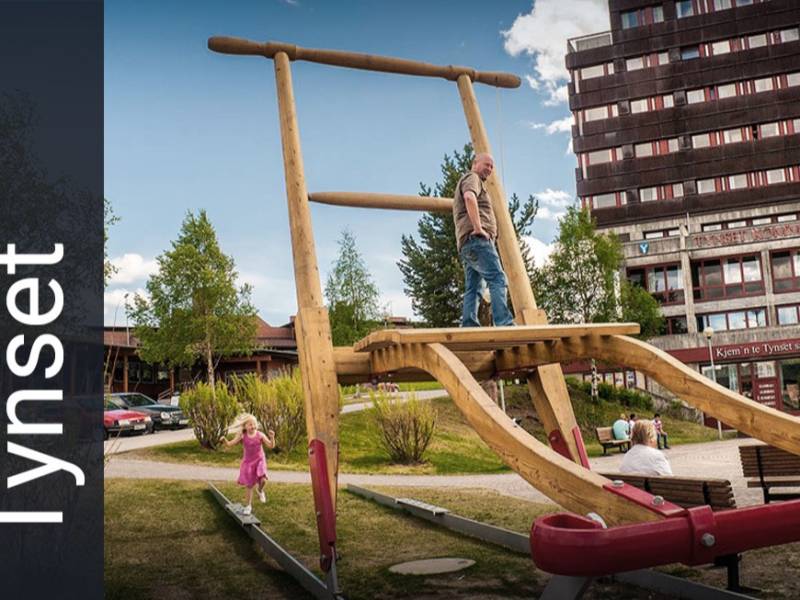
Tynset
Provided by:
Tynset kommune

Welcome to Tynset municipality. With this guide you will hear both old and new stories from Tynset, and learn about the people who built and formed the region. Enjoy the city in your very own pace, and listen to the teller's voice which is activated when you enter inside the red circle surrounding each point of interest found on your map. On the Voice Of Norway map on your mobile device you will find a complete overview over historical and cultural places and objects. Enjoy!
Points of interest




#1
Tynset municipality
Tynset is first described in Håkon Håkonssons saga as an area that supported the heathen «Birkebeinerne». Records from Ålen in 1638 describe Røros farm to lie "in the woods of Tynset"; at that time mining had started at Kvikne but not yet at Røros. The municipality consists of the villages Brydalen, Fåset, Kvikne, Lonåsen, Savalen, Telneset and Tylldalen in addition to Tynset center which is the regional center for the Nordøsterdalen. All the villages are surrounded by forests, mountains, rivers and water, and all have their own sports and hiking trails that facilitate outdoor recreation in summer and winter. The municipality is known for its easily accessible mountains with well-marked trails for hiking, skiing and cycling. Here you will also find 8 protected natural areas. Good tourist information can be found in what has been voted Norway's ugliest town hall, our very own Tynset town hall. There you can also marvel at our famous Kicksled, which is 5.25 meters high, 3.72 meters wide and 11.60 meters long. Also check out the art featured in our roundabouts. Tynset's greatest claim to fame however are the cold winters.
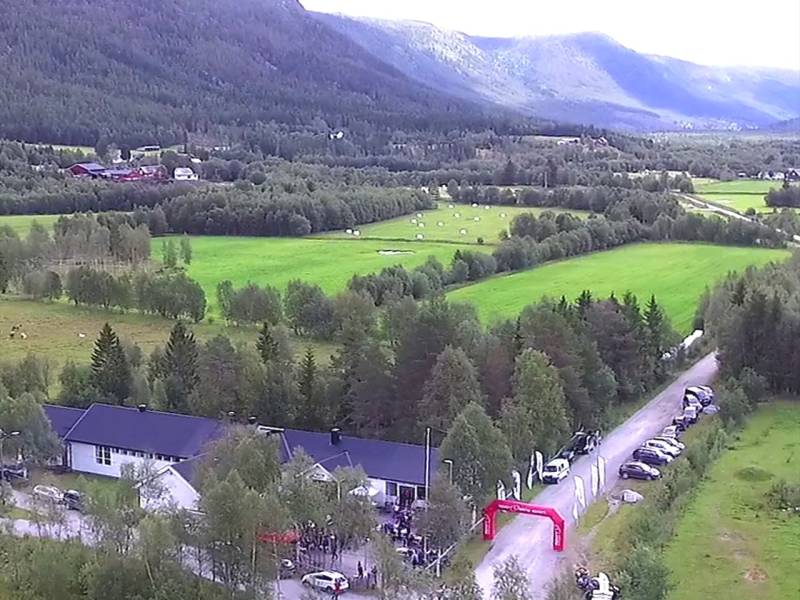



#2
Brydalen
You have now come to Brydalen in Tynset municipality. This village with a total of 80 inhabitants is located at the foot of the Rausjøheimen mountains. In this area you can spot tracks of wildlife such as wolves, bears and other predators. A variety of cultural heritage sites with grave remains informing on ancient hunting practices, traces of coal mining and sites of former dwellings create a wonderful insight to previous inhabitants’ lives. Northern Europe's first dairy cooperative was established in a large stone house in 1856 in Rausjød Valley and is open to visitors. The church dates from 1883. The river Speka forms a natural amphitheater in its bend; residents have built the wonderful concert hall Høgget there. Views into the dark river canyon from the steep mountain walls are spectacular.




#3
Fåset Savalen
Savalen is one of Tynset's most beautiful outdoor areas. To get there, you pass the idyllic village of Fåset from where you drive up into the mountains. Many people know the Savalen name from the time when the skating and skiing elite used the area. The ice rink had fast ice, and both world records and a Norwegian record were set here. Savalsjøen, formed by glacier activity just over 700 meters above sea level, is excellent for water-based outdoor activities such as swimming, canoeing and fishing. In winter, the ski resort is popular, along with an extensive trail network, see skisporet.no. Horseback riding is also a popular activity in the area and Santa's House is well worth a visit. In the mountains to the north-west lies Knutshø landscape conservation area, extending all the way to Oppdal. It is a continuous high mountain range with wild reindeer and a distinctive landscape. In this area there are many cultural monuments that testify to human activity ever since the Stone Age. For more information about outdoor activities in summer and winter, please refer to the links below.



#4
Eidsfossen Power Plant
Driving along Highway 3 over Kvikne, you will notice the old dam in the river Orkla. This was the Eidsfossen Power Plant which has now been refurbished and made accessible to visitors. The power station was built in the period 1915-1917 to supply Røstvangen Mines with electricity. What you see from the road is the inlet pond; 800 meters further down the river you will find the monumental power station with much of the machinery in place. The distribution pool was installed 150 meters above the parking lot and a 300-meter-long pipeline goes down to the power station. Kvikne Copperworks, established by King Kristian IV in 1632, can be reached by heading east for 9km on the road from Kvikne. The operation lasted until about 1800 and since then the Kvikne Copperworks were left unchanged. This makes them a valuable historical site as the oldest workshop in the country.




#5
Kvikne Church
Kvikne church is a timber cross church from 1642 with 200 seats. Original stave church planks in Urnes style were found in the church's attic. These originate from the Kvikne stave church which formerly stood in the same place. The church is one of the few from that era that has been preserved in its entirety. It is known for its carvings and richly painted interior and is open during summer. In 1832 Bjørnstjerne Bjørnson was born at Bjørgan Prestegård in Kvikne. The family stayed at Bjørgan until 1837, when the five-year-old Bjørnstjerne moved with his parents to Romsdalen. The years at Kvikne remained in the young Bjørnstjerne's mind; many of his later peasant stories bear the mark of what he experienced in childhood. In 1932 a memorial stone was unveiled to honor Bjørnstjerne Bjørnsonon at Bjørgan. In the old vicarage dating from 1822 a selection of items from Bjørnson's time were collected and this building is now a museum.




#6
Brubakk cement stones
The mining industry is the oldest industrial activity in the country. It started with the removal of slate, soapstone and quartz. Soapstone was sought after as a material used in cookware, lamps, fishing equipment and looms. Later it was also used as a building material. If you follow the signs, you will arrive at one of the country's most famous stone quarries from the pre-Roman Iron Age. C-14 tests taken out of the fracture show material dating from 400 years BC. It is assumed that 3-4,000 vessels have been removed from the excavation break. Excavation yielded wooden objects such as spades, barrels and a wooden cup. The break is completely unique in the Norwegian context due to its age and extensive yield. Walking in this area with its many traces of activity from 2 500 years ago inspires the imagination. The information boards at RV3 and throughout the break provide good information.





#7
Røstvangen mines
If you turn your gaze towards the other side of the valley, you begin to see traces of the Røstvangen mines from which sulfur ice, a mineral rich in copper, was extracted. Røstvangen had a population of about 500 people during its heyday and consisted of housing barracks, ore laundries, a variety of shops, an assembly hall, a post office, a bakery and a cinema. In 1904, Røstvangen began its mining operation in the valley. The extracted ores were transported down a 30km long railway to Glåma using a cable car. A little more than a decade later, Norway experienced its largest bankruptcy to date in 1921, one of the reasons being the end of World War I and thus an immense decrease in the demand for metal. Nowadays, the remnants of the mining operation are scattered and sparce as most of the equipment was dismantled and sold following the bankruptcy. Mining holes, foundation walls and rock fillings, as well as the outer walls of the large ore laundry are what remain. Røstvangen’s downfall proved equally detrimental for the Tynset municipality due to the symbiotic associations between the people. The fall of the mining industry introduced a plethora of hardships for families in that area. A society which was built up for 17 years witnessed its end at the hand of the financial crisis almost overnight.




#8
Vollan Farm
Soon you will approach an impressive red gangway over the Orkla river. From there you will be able to walk to the museum and the national park center Vollan Gård. After the establishment of Kvikne's copperworks in 1632, several high-ranking personalities left their mark on this area's history. The farm had previously been a vicarage, stretching over several kilometres. Today, it is a center for local history and rural activity. Here you can see, among other things, one of Norway's few preserved farm chapels. You can immerse yourself in nature at the National Park Center, located around the mountain village of Kvikne. The oldest traces left behind by Sami people in the mountains are 8,000 years old, almost dating back to the Ice Age. The National Park Center also provides information about the protected areas around Kvikne: Forollhogna National Park, Knutshø landscape conservation area and the Grøntjønnan and Sørsjøen nature reserve.
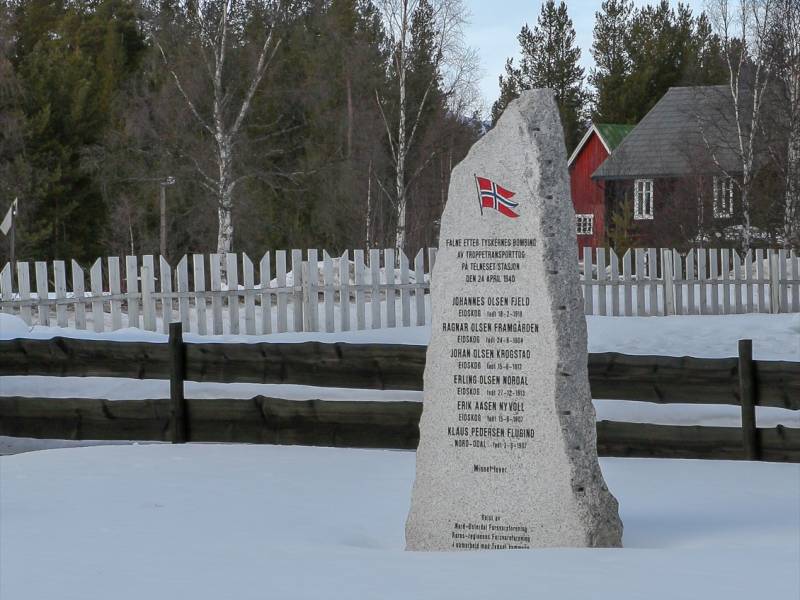
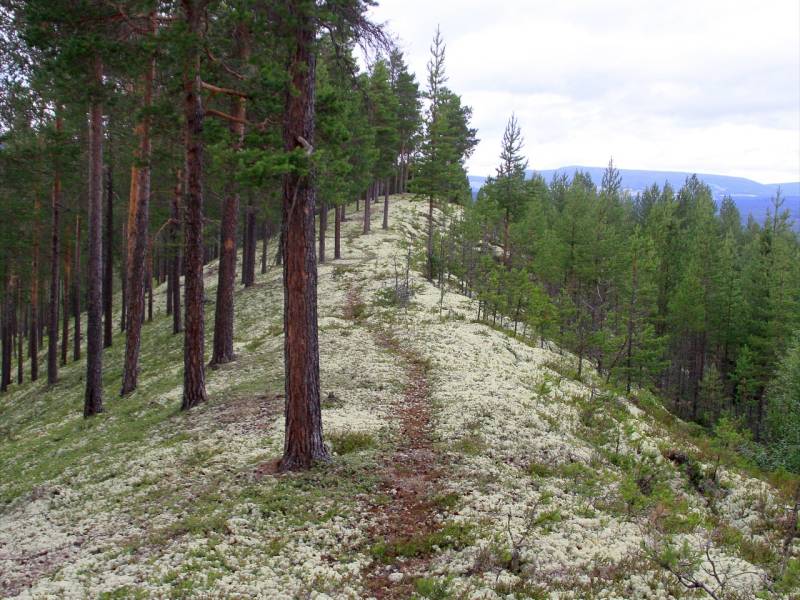
#9
Telneset
Once the railway was constructed in 1877, Telneset became a separate hamlet, giving life to a small community surrounding the station. You can visit the Gammeldalen Nature Reserve in this area. It aims to conserve one of the most formidable dead glaciers in central Norway. On April 24, 1940, the village experienced the most dramatic event in its history. Norwegian soldiers were on the retreat passing through Østerdalen with German soldiers in pursuit. The Norwegian train came under fire and had to stop at Telneset station for repair. Subsequently, German aircraft bombed the train, killing six young Norwegians. A memorial for the fallen was built at Telneset station to commemorate this tragic day in Telneset’s history.



#10
Tylldalen valley
Tylldalen is an agricultural village with 500 inhabitants. It used to be the main parish in the area, having annexed Tynset and Alvdal. The first cultural monument you approach is Tylldal church which was inaugurated in 1736 and was dubbed "Our Redeemer`s Church". Among the motifs we find the mirror monogram and the coat of arms of Kristian the 6th. Behind the church you will arrive at Tylldal farmyard situated around the old vicarage where the old road stretched down from the mountain. The pilgrims walked along this road on their way toward the burial ground of Olav the Holy at Nidaros Cathedral. The Tylldalen village community takes pride in conveying knowledge about the village's medieval history. We recommend you take a walk down the cultural trail around the mountain Kommern. The area is packed with monuments providing insights into human behavior and culture several thousand years ago. The path passes a unique burial ground, large animal trapping systems between Eggevola and Kommern, an iron-making plant, coal mines and coal burners. Some parts of the trail follow the Pilegrimsleden.





#11
Tynset church
Tynset was first mentioned in the year 1211, when the Archbishop of Nidaros consecrated the new stave church. The previous churches in Tynset were located higher up on the hillside. A memorial now designates the former location. Today's church stands on Kirkeeggen, near the old town center Neby. This church from 1795 is the largest octagonal church built in timber. It is known as the "Nordøsterdalsdomen and is the largest of the churches in the Nordøsterdalen, optimally situated such that it is visible from all sides. The view from the church is well worth a visit. The road that leads here is called Vedalen, pointing to the fact that this has been a place of worship for a very long time. The pilgrim route that passes here is part of Østerdalsleden. In the late Middle Ages, many believers went this route between the Swedish Vadstena (Holy City of Birgitta) and Trondheim / Nidaros (Holy City of Olav).



#12
The Museumpark and Ramsmoen
The Museum Park is located a few hundred meters east of the center along the Parkveien. Here you can see a collection of traditional buildings from the North East Valley. The architectural museum provides insight into the local building traditions, such as the "East Valley living room", the "coffee grinder building" and "barge ceiling". Klæbua from Tylldalen is the oldest house, dating from around 1690. The Museum Park was conceived as a public gathering place for local residents, and is well worth a visit, especially during summer events. 100 meters behind the town hall you will find the Museum Center Ramsmoen. This is the central unit of Musea i Nord Østerdal, which organizes the historical sites and visitor centers in all the municipalities of the region. At the museum center there are exhibition rooms and archives, as well as in-house specialists for buildings, objects, photos and archives. There is also an extensive library. The old municipality house Rambu has stood here for over many centuries. It now houses artist workshops and various cultural events.




#13
Neby historic place
You are now at Tynset's old town center Neby that dates back a millenium. When the railway was built on the other side of Glåma, the town's center moved from here and Neby was somewhat forgotten. Some of the buildings have been preserved; their historical architecture lets one imagine Neby's former charm. These days there are many ongoing initiatives to bring Neby back to life. A new footbridge over the river is being built where the old bridge led to the pilgrim path. And the whole area is being expanded with a network of hiking trails, attractions and facilities for the benefit of both locals and visitors. If you feel like having coffee, there is a café on Bortistu Neby Farm in an attractive courtyard. It stands out in the area for its original state showing how houses and courtyards were designed here in the past. Former owners were the artists Magne and Kjellaug Holter, with some of their art available to visitors. We recommend a trip to old Neby and the cafe Bortistu.



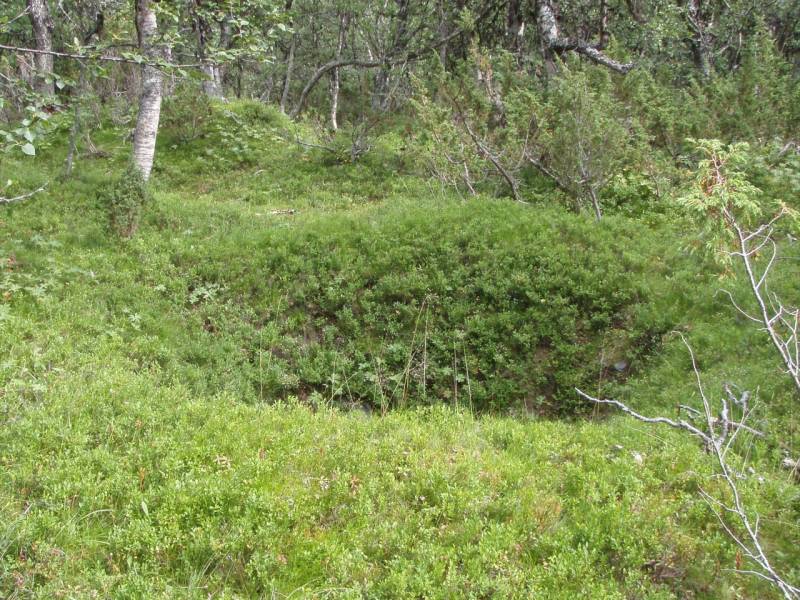
#14
Sami cultural heritage
The Sami cultural monuments in Tynset are largely centered around the exploitation of the reindeer. Sami subsistence depended on hunting for reindeer as well as hunting for other animals, fishing and gathering. From about 1600 onwards, it was common practice to keep domestic reindeer and up to about 1900, the Sami's reindeer grazed in the areas surrounding their settlements. Sami cultural monuments include gamma tufts, animal trapping systems, meat herds and burial-/sacrificial sites. Both sides of this valley have traces of Sami cultural activity. If you leave the main road here at the dam you will find the city of Návdalen. Here you can see the remains of an old coal mine, a coal burning stove, a number of different stone structures and a burial ground. In this area, the layout of the community appears quite different and denser than in the surrounding mountains. Several of the cultural heritage sites in the area may have been used by both Sami and Norwegians.



#15
The Station town Tynset
The entire area that is now Tynsetbyen was formerly a working farm with livestock. Additional industries for the inhabitants were hunting, fishing and crafts. There is a network of hunting trenches all the way to today's center. Eventually, alongside the farms, work at the many mines and smelting cabins gave rise to new professions and specialties. Rørosbanen was opened in 1877, when the passenger train still had to stay overnight at Tynset station. People needed accommodation and food, which generated development of the area around the station with new inns and shops. The center of Tynset was soon moved from old Neby to the train station. At times, there were 15 hotels operating in connection with the train station, in addition to several farms running guest houses for summer tourists. Now Tynsetbyen has been transformed into a modern village with many opportunities for commerce, accommodations and leisure activity.